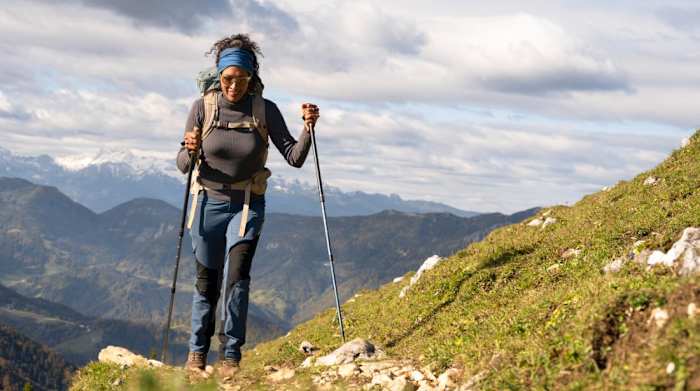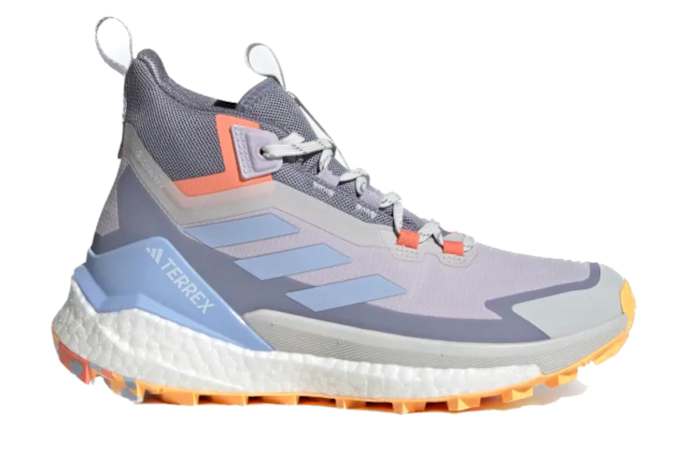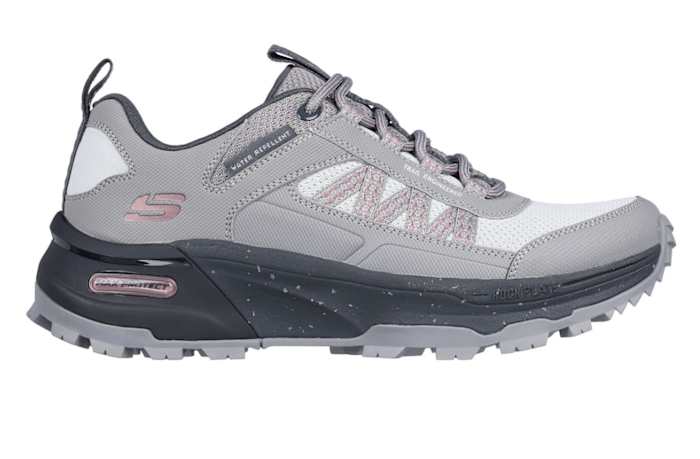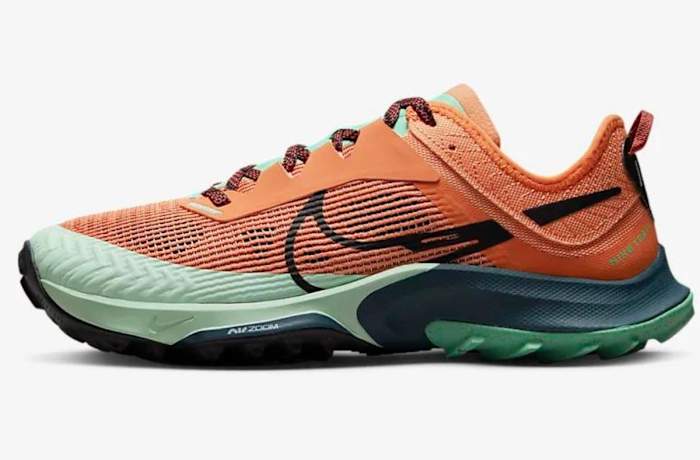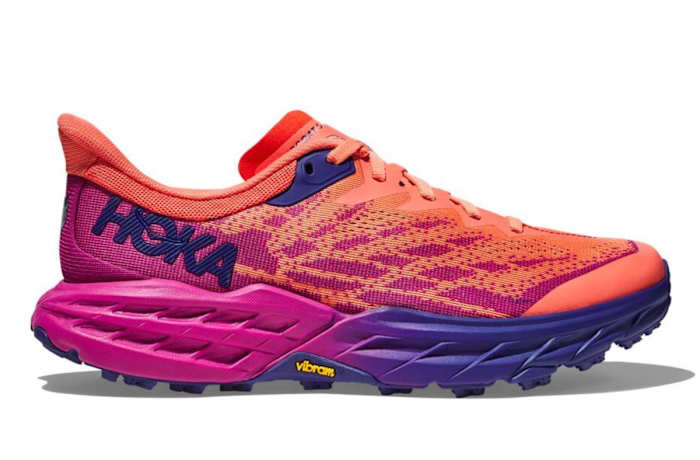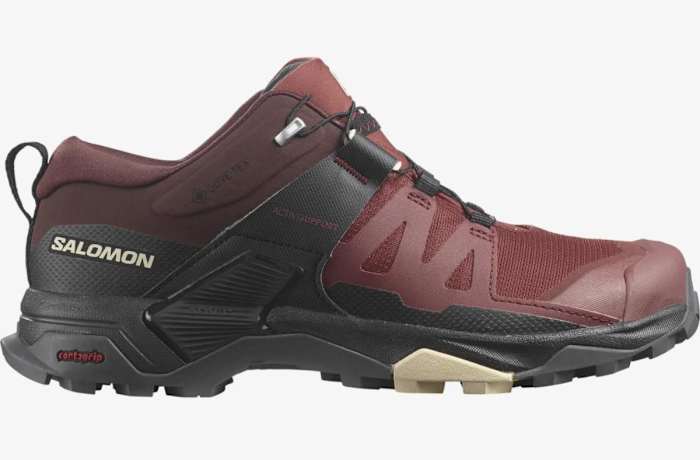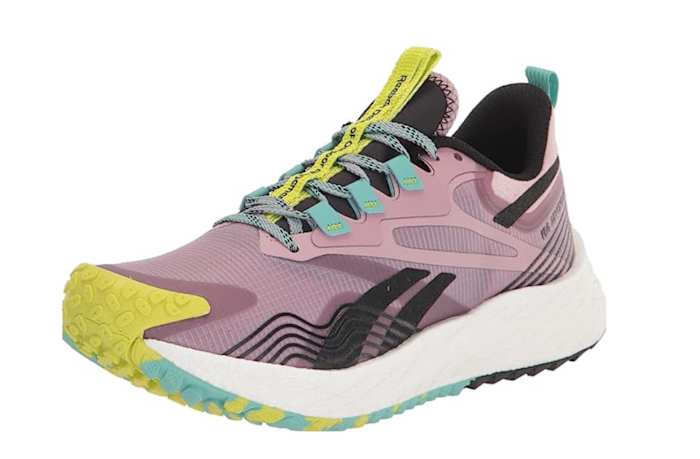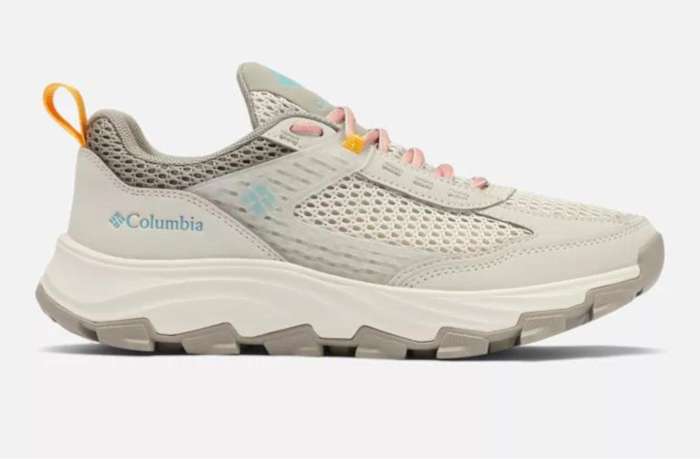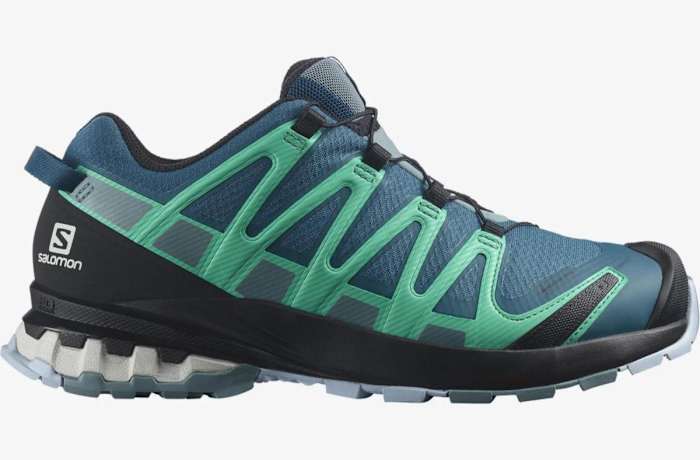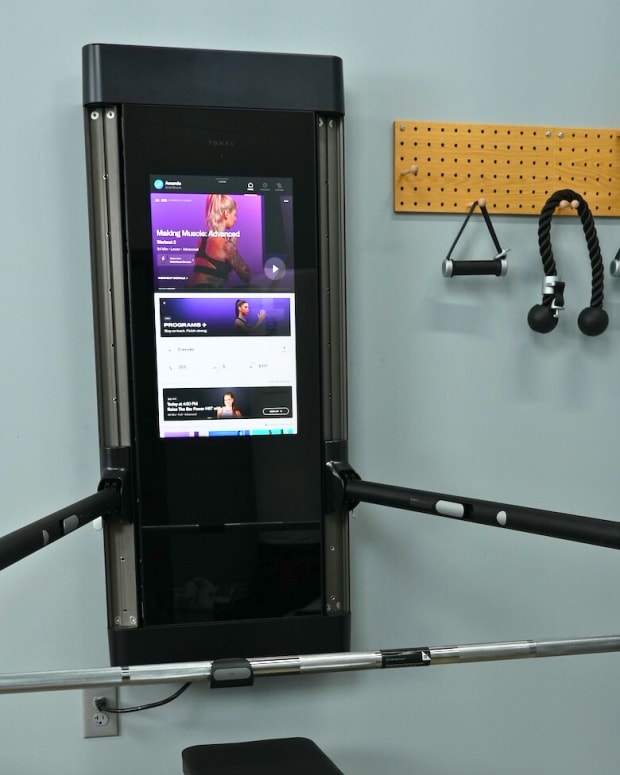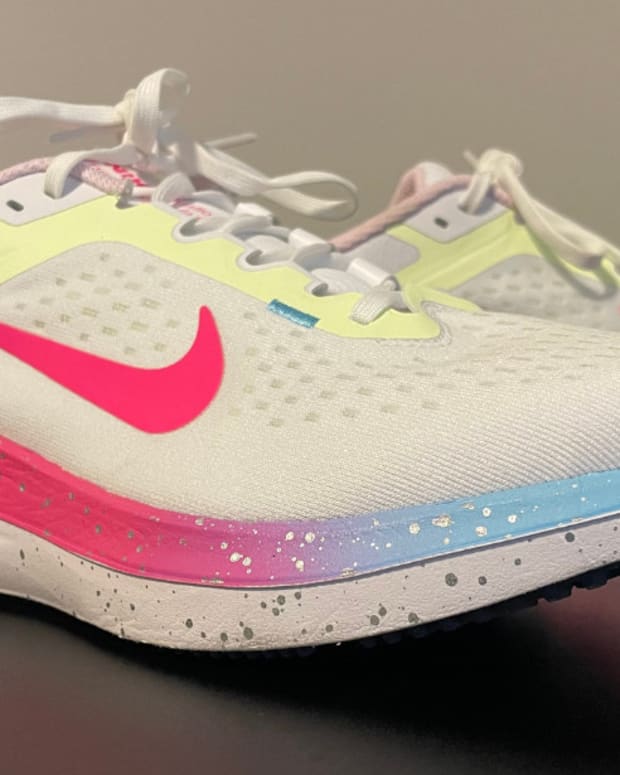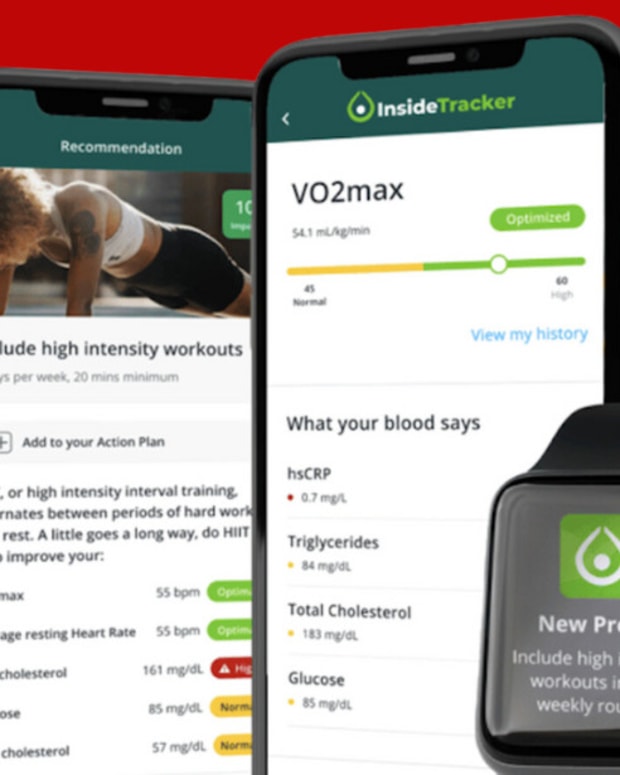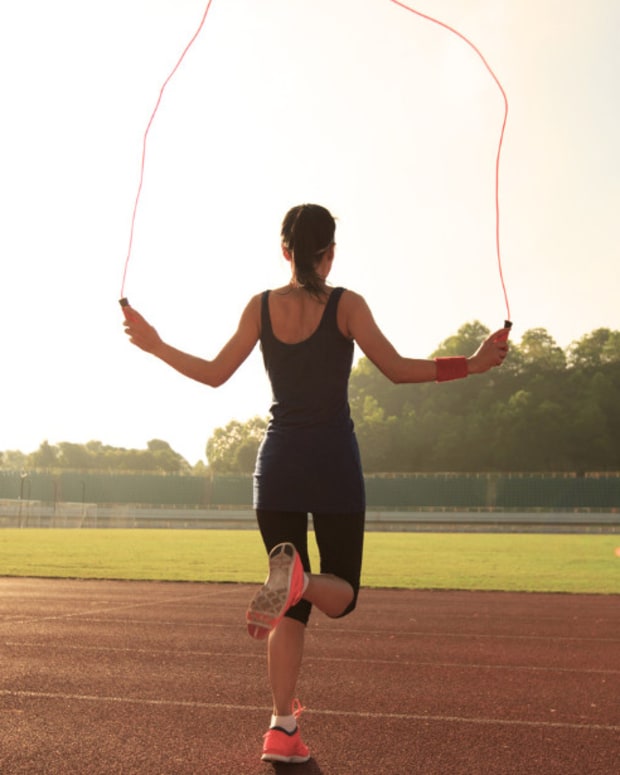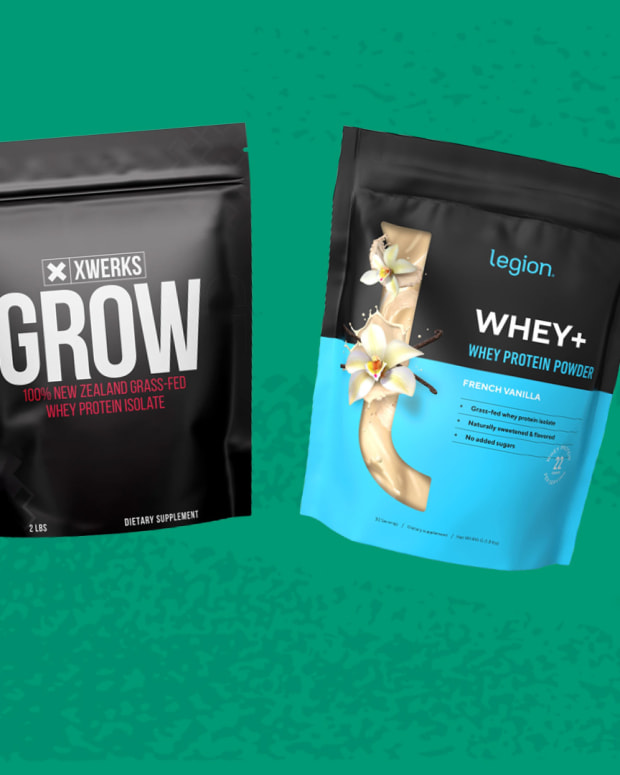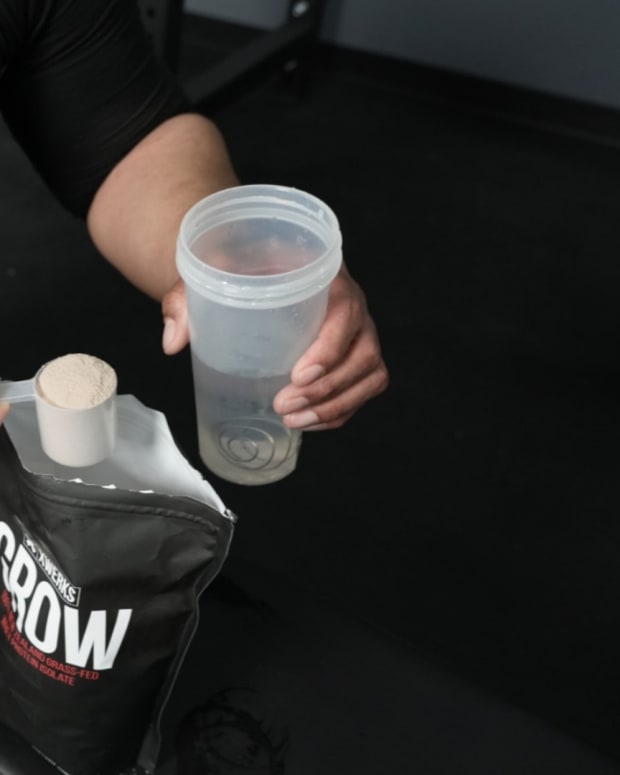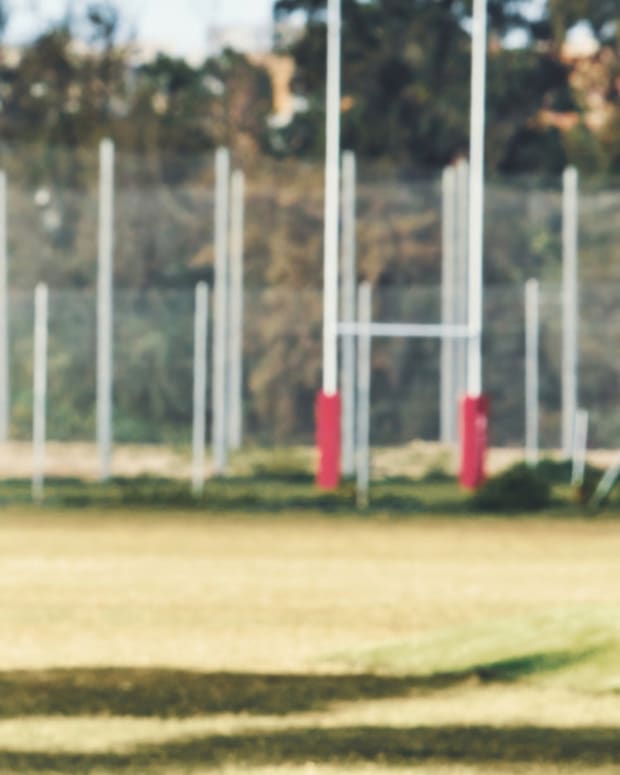The products featured in this article have been independently reviewed. When you buy something through the retail links on this page, we may earn commission at no cost to you, the reader. Sports Illustrated editorial staff are not involved in the creation of this content. Learn more here.
Even though hiking is a full-body workout, your feet bear the most strain. Wearing ill-fitting, ill-adapted hiking shoes is a surefire way to cut short your hike, or to return home with a mass of blisters that make your feet look like a popped roll of Bubble Wrap.
Hiking shoes are one of the fastest developing products in the outdoor market. More and more hikers are opting for lightweight trail shoes over traditional hiking boots, but is this always the best choice?
There are many factors to consider when choosing a proper hiking shoe. Trail runners and hiking shoes differ from running shoes designed for use on asphalt primarily in their soles. Trail shoes have lugs, which are deep indentations in the material of the sole—a little bit like shallow football studs. They provide traction and grip, and good lugs are designed to provide grip in a variety of situations, helping you gain momentum on uphill climbs and keeping you stable on slippery descents.
Good hiking shoes allow your feet to breathe but don’t get saturated in water at the first sign of a shower. They’re comfortable and flexible, but they still provide that all-important support to your feet and ankles. The design of a woman’s hiking shoe can sometimes be different than men’s hiking shoes, because women’s feet can be a different shape. Women’s feet may be slimmer with higher arches. However, in many cases the only differences between men's and women's hiking shoes are the size numbers and the colors.
But still, both hiking shoes and hiking boots have their place. We’ve rigorously analyzed the best hiking shoes on the market and consulted experts to give you the lowdown on how to choose a hiking shoe, and when to wear them.
Our Picks for the Best Women’s Hiking Shoes:
- Best Hiking Shoes for Women for Any Terrain: adidas Terrex Free Hiker Gore-Tex 2.0
- Best Women's Hiking Shoes for Comfort: Skechers Max Protect Legacy
- Best Budget Hiking Shoes for Women: Nike Terra Kiger 8
- Best Lightweight Hiking Shoes for Women: HOKA Women’s Speedgoat 5
- Best Waterproof Hiking Shoes for Women: Salomon X Ultra 4 Gore-Tex
- Most Versatile Hiking Shoes for Women: Reebok Floatride Energy 4 Adventure
- Most Breathable Hiking Shoes for Women: Columbia Women’s Hatana Breathe Shoe
- Best Hiking Shoe for Women for Wet Climate: Salomon XA Pro 3D V8 Gore-Tex
Best Hiking Shoes for Women for any Terrain: adidas Terrex Free Hiker Gore-Tex 2.0
Key Features:
- Mesh upper
- Gore-Tex membrane
- External heel clip and EVA stabilization frame
- Weight: 13.5 ounces
- Sizing: True to size
- Waterproof?: Yes
The adidas Terrex Free Hike Gore-Tex 2.0 Hiking Shoes were designed with comfort, stability and versatility in mind. The shoe is waterproof due to its GORE-TEX membrane, while the rubber outsole maintains a strong grip on the ground should the shoe be exposed to water.
The external heel clip and EVA stabilization frame keep the foot in place within the shoe. These features prevent many injuries while hiking because there is more support cushioning the foot. The stability of the shoe also gives hikers more confidence to tackle uneven grounds and rocky terrain.
Not only are the Terrex Free Hike Gore-Tex 2.0 Hiking Shoes good for any hike, but they are also beneficial for the environment. The shoe upper contains a minimum of 50 percent recycled content in order to cut down on plastic waste. Plus, adidas attempts to use recycled material in all its shoes to help save the environment one step at a time.
Pros:
- Waterproof
- Designed to be lightweight and comfortable
- High cushioning
- Uses recycled material
Cons:
- Expensive compared to other brands
- Could have more toe protection
Best Women’s Hiking Shoes for Comfort: Skechers Max Protect Legacy
Key Features:
- Air-Cooled Memory Foam insole and rock plate midsole
- 3M Scotchgard treated leather and synthetic upper
- Water-repellent and stain resistant
- Weight: 15 ounces
- Sizing: True to size
- Waterproof?: Water-repellant
Skechers offers a comfy sneaker fit for the city or the backcountry with its Max Protect Legacy hiking shoe. Despite the hiking footwear’s comfort and light weight (a little under a pound), a rock plate midsole adds rugged protection for backpacking trips with bumpy terrain. But you don’t have to worry about feeling like you’re standing on a stiff board: the memory foam insole adds ample cushion and arch support, according to Skechers.
The shoe, released in 2023, comes in a medium fit, and in the future will be furnished in a wide fit for feet that need extra space or wiggle room. And although you won’t be able to wade through streams and come out on the other side with dry feet, the design can withstand some wetness thanks to Scotchguard treatment. The lace-up style shoes are available in a cool gray and charcoal, or brighter beige with orange details. The brand says more looks are to come in the fall.
Pros:
- High-level breathability
- Water-repellent
- Lightweight but sturdy
Cons:
- Currently only available in two colors
- The shoes are quite new, so few customers reviews are out there
Best Budget Hiking Shoes for Women: Nike Terra Kiger 8
Key Features:
- Padded tongue and inner for maximum comfort
- Lock in and go system to keep heels stable
- Breathable mesh for effective moisture wicking
- Ultra lightweight
- Weight: 8.3 ounces
- Sizing: A little big, consider downsizing half a size
- Waterproof?: No
For speedy hikers and trail runners, the Nike Terra Kiger 8 is made to be comfortable, lightweight and highly efficient. The inner is very well cushioned, particularly around the heel, which is welcome on long trails with harsh terrain. There is also padding on the tongue. The lock-in-and-go system is designed to keep your heel stable on steep descents. Bumpers at the toe also protect your feet from rocks.
Reviewers report that the Nike Terra Kiger 8 is exceptionally breathable and the mesh outdoor allows sweat to escape easily. They don’t provide a lot of water resistance, however, but they are quick to dry.
The sole feels flexible and responsive, and the lugs provide decent traction, although on slicker surfaces these aren’t the grippiest hiking shoes. Stability-wise, there’s not a lot of support for ankles, however they’re nimble and you can easily feel the ground under your feet. The mesh exterior, while providing good breathability, does act as a bit of a trap for twigs and bits of debris.
The Nike Terra Kiger 8 is a very good choice for ultralight backpackers and fastpackers, or hikers on flatter paths in hot conditions, where breathability and shoe weight is key. The colorful design and value for money seal the deal.
Pros:
- Excellent value for money
- Superior cushioning without the need to add padded insoles
- Exceptionally breathable
- Flexible, responsive soles
Cons:
- Could be grippier
- Little water resistance
Best Lightweight Hiking Shoes for Women: Hoka Women’s Speedgoat 5
Key Features:
- Curved soles to mimic your natural gait
- Vibram Megagrip soles are designed to grip even on slippery surfaces
- Molded sockliner and toe cap to protect from bashes
- Fully vegan and partially made from recycled materials
- Weight: 8.5 ounces
- Sizing: True to size
- Waterproof?: No
The Hoka Women's Speedgoat 5 takes hiking shoes to new heights. Gone are the days when hiking shoes came in only brown and gray–fuchsia and camellia or elderberry and lilac marble make a welcome change from basic. These hiking shoes were made for heavy duty use while maintaining a lightweight feel. Wet ground is also no problem for the soles because they're made of Vibram Megagrip, a rubber compound that offers strong grip. Thus, they’re able to cling well to slick surfaces like granite and mossy roots.
The curved shoe soles have been designed with a natural running or hiking gait in mind. Hoka calls this design a Meta-Rocker, and it stops your foot from coming to rest fully flat. This helps your feet propel off the ground again at impact, a little like a wheel, which is thoroughly welcome if you’re pounding out 40,000 steps a day wearing a heavy backpack. It also keeps your feet very mobile, where traditional hiking boots would lock them in with more rigidity, but the molded sockliner and toecap give good protection against boulders too.
The Hoka Women’s Speedgoat 5 is designed to be lightweight, and trail runners and ultra-light fastpackers will love the range of mobility and lack of restrictions these shoes give. Keep in mind that these shoes don’t offer much ankle support—if you fall while carrying a few days' worth of supplies in your hiking backpack, you could injure yourself. They keep out water in a light shower, but on boggy ground and downpours your feet will also get wet quickly.
Related Post: Best Rain Boots
For fast day hikes or hikes where you’re not carrying all your camping gear, the Hoka Women’s Speedgoat 5 are an extremely comfortable, practical choice.
Pros:
- Ultra lightweight and bouncy
- Great grip, particularly considering the weight
- Flexible with space for a wide range of movement
- Best for trail running and moving fast
Cons:
- Little ankle support
- Not waterproof
Best Waterproof Hiking Shoes for Women: Salomon X Ultra 4 Gore-Tex
- Stitch-free construction for a snug fit
- Innovative lacing system to keep laces tied fast
- Gore-Tex for effective moisture-wicking
- Anti-debris mesh keeps out twigs and stones on rough terrain
- Weight per pair: 11 ounces
- Sizing: They fit a little small, consider sizing up a half or whole size
- Waterproof?: Yes
The Salomon X Ultra 4 Gore-Tex hiking shoes were designed for challenging terrain. The lug soles are designed to be extremely grippy, giving great leverage on both steep uphill climbs and stabilizing the wearer on gnarly descents. The upper material is a mix of synthetic fabrics and anti-debris mesh to keep out stray twigs and bits of stone when hiking over rough ground. They’re backed with Gore-Tex protection to ensure maximum breathability, while keeping the shoes waterproof. Gore-Tex is recognized as one of the most efficient materials for wicking moisture in the outdoor industry, and is a breathable fabric membrane which allows water vapor (i.e. sweat) to pass through, while stopping water droplets from coming in from the outside. The stitch-free construction of the upper part of the shoe helps these hiking shoes fit snugly around your foot like a glove.
This shoe was also designed to make you feel comfortable. It offers a built-in sockliner that provides increased cushioning and breathability, as well as a low density chassis (framework) and soft padding around the lip and heel. In terms of the support provided, the Salomon X Ultra 4 Gore-Tex is designed to be stable and give a high level of support to the arches of the feet in particular. The protective toe cap should prevent stubbed toes on a rough trail.
Particularly innovative is Salomon’s Quicklace lacing design. Instead of tying shoelaces the regular way, the Quicklace system adjusts using a little drawstring cable. It means you can easily adjust the tightness of your shoes on the go, without having to worry about laces becoming loose and catching on foliage.
Pros:
- Gore-Tex moisture-wicking membrane
- High level of grip
- Easy-to-adjust lacing system
- Contoured foot cushioning
Cons:
- Limited ankle support
- The tongue isn’t fixed and tends to slip
Most Versatile Hiking Shoes for Women: Reebok Floatride Energy 4 Adventure
Key Features:
- Recycled materials used in the plastic mesh toe and reinforced heel
- Thick foam sole and padded tongue for comfort
- Deep heel pocket
- Weight: 8 ounces
- Sizing: A little big, reviewers suggest considering going down half a size
- Waterproof?: Water-resistant
At least 30 percent of the Reebok Floatride Energy 4 Adventure is made from recycled materials, but they’re not just good for your conscience, they keep your feet happy too. The thick, foamy sole is designed to provide a lot of springiness, which is particularly welcome for hikers covering multiple miles in a day. The padded tongue also adds an added level of comfort, making these hiking shoes a good option for longer trail runs and multi-day hikes.
The mesh outer is great for moisture wicking and offers some water resistance, although if you’re hiking through swampy ground, your feet are likely to get wet pretty quickly. Luckily, the Reebok Floatride Energy 4 Adventure is also quick-drying. A toe guard adds extra stability and protection, and improves the durability of the shoe, but they’re not too rigid. These hiking shoes bend well with the shape of your foot and allow mobility and flexibility over varied terrain.
The heel pocket is deeper than with many hiking shoes which adds an extra degree of stability (although be aware that these shoes still come up fairly low on the ankle, so they don’t offer much ankle support). The carbon rubber outsole has good traction, and although the lugs look small, they offer better grip than expected, although some reviewers report that they slide in thick mud and on really slippery ground.
The Reebok Floatride Energy 4 Adventure is a really versatile shoe which bridges the gap between trail running, asphalt running and hiking, but if you’re an extreme trail runner or tackling very uneven ground on a multi-day hike, they might not provide enough grip for you.
Pros:
- High recycled material content
- Bends with the movement of your foot
- Good for users who switch between hiking, trail running and road running
- Long-lasting and durable
Cons:
- Lugs aren’t deep enough to grip on very slippery ground
- Not fully waterproof
Most Breathable Hiking Shoes for Women: Columbia Women’s Hatana Breathe Shoe
Key Features:
- 100 percent rubber outsole
- Directional lugs for improved traction
- Secure lacing system
- Responsive foam midsole for comfort and mobility
- Weight: 9.77 ounces
- Sizing: True to size
- Waterproof?: Water-resistant
The Columbia Women’s Hatana Breathe Shoe is a little heavier than some hiking shoes, but it’s worth a little extra weight for the grip and traction that they provide. These shoes perform much better on trails and uneven surfaces than flat surfaces or tarmac. The lacing system is designed to lock your foot in place well, ensuring no slipping and sliding as you pound up and down hills. The lugged soles offer grip on both climbs and descents.
The breathable open mesh on the outer shoe allows sweat to escape easily, and reviewers say they stay dry in light showers (although don’t expect to go trekking through a bog and come out with dry feet!). The single density foam midsole offers cushioning and support, which is welcome on uneven trails where your foot comes down hard on stones.
For the price bracket, they’re very versatile. They sit between a trail runner and a hiking shoe (a little heavier and wider than your regular trail runners, but this offers a welcome extra level of stability on rough ground). For thru-hikers that like to cover ground in fast, lightweight fashion and want to ensure that their feet can breathe easily as they move, the Columbia Women’s Hatana Breathe Shoe is a good choice.
Related Post: The Best Hiking Sandals for Breathability
Pros:
- Great versatility for users that alternate between running and hiking trails
- Exceptionally breathable for continued exertion or hot conditions
- Excellent grip
Cons:
- Heavier than some trail runners
- Limited ankle support
Best Hiking Shoes for Women for Wet Climates: Salomon XA Pro 3D V8 Gore-Tex
Key Features:
- Breathable Gore-Tex membrane
- Easy-to-adjust Quicklace lacing system
- Protective toe cap
- Increased stability
- Weight per pair: 11.1 ounces
- Sizing: Runs a little big
- Waterproof?: Yes
The Salomon XA Pro 3D V8 Gore-Tex shoes scream technicality. A bridge between traditional trail runners and hiking shoes, they’re lighter than your average hiking shoes, but provide much more stability than regular trail runners. The heel-to-toe drop (11 millimeters to be precise) is higher than you’d usually get with a trail runner, which helps protect the lower leg, foot and calf, so the areas that are often prone to injury on a long-distance hike. The Gore-Tex membrane efficiently wicks moisture and offers a really good level of waterproofing too. If most of your hikes are in wet conditions, opting for hiking shoes with a Gore-Tex membrane is invaluable.
The Quicklace system allows you to adjust how tight your laces are quickly and easily on the go, using a drawstring. It might not be for everyone, but many reviewers find it easy to use and a good way to ensure that your laces don’t catch on debris.
The stitch-free upper helps these shoes to fit really snugly, and it’s an added protection against water coming in. The protective toe cap makes them extra durable and well adapted to rough terrains. Salomon are market leaders when it comes to hiking shoes, and the craftsmanship shows.
The only downside is that reviewers says these shoes are a little rigid, and the tongue is detached and prone to slipping. They’re true workhorses though, with excellent protection against moisture. For hikers that find a hiking boot too restrictive but don’t find that trail runners offer enough stability or waterproofing, the Salomon XA Pro 3D V8 Gore-Tex hiking shoes strike a good balance.
Pros:
- High waterproof protection thanks to the Gore-Tex membrane
- More stable and with better grip than many hiking shoes
- Durable and heavy-duty
Cons:
- A little rigid
- Not the lightest
- Detached tongue slips easily
How We Chose the Best Hiking Shoes for Women
Hiking shoes have a lot more to cope with than regular shoes, running shoes or even trail runners. They have to be incredibly versatile. A multi-day hike can take you over loose shale, ice and bogs in one journey. You can be in freezing conditions one day, and tropical heat the next. They’re not just supporting your body either. If you’re on a long hike and carrying all of your camping gear, your backpack could easily be adding an extra 26 pounds plus of weight (ultra-light disciples not included).
When choosing the best hiking shoes for women, we analyzed user reviews to find out how well each shoe grips, how much support it gives to the ankle and arch of your foot, whether they were water resistant and wicked moisture and how much each shoe weighed. We’ve also looked at how they perform in different conditions. Hikers experience a variety of terrains and temperatures, and it’s unlikely that you’ll be trekking over the same kind of ground each time that you set out. All of the shoes analyzed have been designed specifically for the shape of women's feet.
What To Look For in a Woman’s Hiking Shoe
Consider the terrain
To decide whether you need a hiking boot or a hiking shoe, you’ll want to consider the sort of terrain that you’re hiking. Remember that hiking shoes, while lighter in weight and quicker to dry, don’t offer as much ankle support as a boot. They’re great for day hikes and fastpacking, but if you’re carrying a lot of weight, your ankles will thank you for the extra support and structure of a boot. Taking trekking poles is another good way to stabilize your joints, particularly if you’re tackling steep inclines and prefer hiking shoes to boots.
“Hiking shoes are better for shorter walks and made paths,” says Emily Woodhouse, mountain leader. A Mountain leader, or ML, is a qualification that equips an individual with the skills needed to lead others in the highlands or mountains of the UK and Ireland. For extreme hikers, the ML certification is the next best step, so they can become trained to lead others while doing what they love–hiking.
“If you’re doing a point-to-point hike where most of your kit is being ferried by vehicle, you might choose hiking shoes over boots for comfort. They tend to be a lot lighter, which makes walking slightly less work over multiple days.”
Woodhouse recommends exercising caution if you’re not a regular trail runner, or used to moving over rough terrain. If you fall, particularly when carrying a lot of weight, you’re more likely to turn an ankle when wearing hiking shoes.
Carla Khouri, a qualified mountain leader, outdoor instructor and UK community manager at Merrell Hiking Club, echoes Woodhouse’s concerns about wearing hiking shoes when carrying a heavy pack, but she believes the most important factor is how your shoes feel.
“They need to fit your feet, be comfortable and not pinch or cause blisters,” says Khouri. “A hiking shoe is a good choice if you do not plan to carry significant weight on your back, but want lightweight footwear that offers good protection underfoot from rocks and roots.”
The depth of the lugs is important for grip. The team at 360 Expeditions, an adventure travel company in the French Pyrenees, recommend going for shoes which have lugs at least a centimeter deep. Combined with a stiff sole, this will give the necessary support for unstable terrains such mud or snow.
Comfort
It’s not hard to see why trail shoes and hiking shoes are booming in popularity. Flexible, breathable and lightweight, they make traditional walking boots feel somewhat old-fashioned and clunky. Both have their place, so it depends on personal preference and the type of hiking that you’re doing. If you’re mountaineering, a boot with a sturdy toe cap is better. If fast and light is your style, you could certainly do worse than a hiking shoe.
Hiking shoes and trail runners often have more padding around the tongue and in the sole than running shoes designed for asphalt, as the impact on your feet is greater when you run over boulders. Make sure that you choose a hiking shoe which is breathable, and if you’re going to be hiking in wet conditions, try to get a pair with a waterproof membrane.
If your shoe isn’t breathable, take breaks during your hike to give your feet some air.
“If you don’t, the moisture will build up and the heat and pressure will make your feet swell, causing rubbing” says Vanessa Carter, a team member at Wilderness Scotland. Wet feet are a recipe for blisters.
Fit
“A hiking shoe should be not too tight and not too loose,” says Carter from Wilderness Scotland. She recommends wearing hiking socks when you try the shoes on in the shop.
“Each brand will fit differently and your feet tend to swell after activity, so sizing up is often a good shout, but don’t go too roomy,” Carter continues. “When you’re descending hills and trails, this gives your toes room to wiggle. Don’t forget to pair your walking shoes with the right size socks (yes, socks come in sizes too!). Merino wool and natural fibers are great. Although they cost more, they stay warm when wet, have moisture-wicking properties and they’re comfortable and odor-resistant, so what’s not to love?”
Don’t be afraid to take your time when trying shoes on. Good hiking shoes shouldn’t need breaking in, and shouldn’t be uncomfortable when you first try them out.
As Carter reminds us, don’t assume your hiking shoe size will be the same for the whole of your adult life.
“Our bodies change, so why wouldn’t our feet?” she says. “There’s no harm in getting resized regularly.”
Make sure that you don’t tie your laces too tight. The team at 360 Expeditions call this the ‘Goldilocks ratio’.
“Too loose and your shoes won’t be secure, and they’ll rub,” they say. “If they’re too tight, though, this can restrict your circulation, which can be particularly dangerous if you’re hiking in cold environments. Ideally, lacing should allow for a little movement without your toes sliding into the end of the toe box when descending a hill.”
Durability
It might be tempting to wear your hiking shoes until they’re held together with a mass of duct tape, but this is a recipe for injuries and discomfort. That being said, you should be able to get plenty of wear out of a pair of hiking shoes. Lighter hiking shoes and trail runners generally need replacing every 400-500 miles, and hiking boots are even more durable, lasting on average 500-1,000 miles, or two years. If you’re a casual hiker, you can keep the same hiking shoes for many years.
The type of terrain you’re traversing will affect the durability of your hiking shoes. If you’re clambering over rough, wet, muddy terrain, your hiking shoes will wear out more quickly than if you’re walking on made trails and flat, dry surfaces.
Another major factor is the material that your hiking shoes are made from.
“Leather lasts for years, but it tends to be much heavier,” says a team member at 360 Expeditions. “Synthetic materials are lighter, but have less longevity.”
There’s plenty that we can do to prolong the life of a hiking shoe. Clean them after use, and store them properly, in a dry place. Repair issues (e.g. loose eyelets) as soon as they arise.
Cost
The old saying ‘you get what you pay for’ holds strong, and price does generally give an indication of quality when it comes to hiking shoes, but there are plenty of options that offer excellent value for money.
A general ballpark figure for a decent pair of hiking shoes is between $100 and $200 a pair.
Break-in period
How to break in shoes is a particularly pertinent question when shopping for new hiking shoes. Unlike with a pair of heels, where you might whack on a band-aid and grin and bear it, if your hiking shoes chew your feet on day one, you’re in for an uncomfortable, unpleasant hike. But with many of us living in cities, how do you check that your hiking shoes will be comfortable on the trail?
There’s no set break-in period, and hiking shoes shouldn’t require you to walk for hours in discomfort. They should fit comfortably from the first wearing. However, there are precautions you can take.
“Toughen up your feet,” suggests Carter from Wilderness Scotland. “If you’re always wearing super bouncy, pillowy trainers, a supportive hiking shoe might feel like a foot straitjacket! And get a pedicure; keeping toenails trim goes a long way to reducing blisters and pain when hiking, especially over uneven terrain.”
Preparing your feet, it seems, goes a long way towards breaking in your hiking shoes quickly. Emily Vaudan, a race-winning trail runner for Team Salomon, Verbier, recommends starting to moisturize your feet nightly at least a month before a race or long-distance hike.
Height
A low shoe may work well for trail running, but Woodhouse recommends looking for a higher shoe for hiking.
“Look at how high the ankle is; usually low-cut and mid-height are available,” she says.
“If you aren't used to multi-day hikes and you haven't reinforced your ankles through trail running or lots of moving over rough terrain, boots are really the safer option,” says Woodhouse.
It’s also important to look at the heel-to-toe drop, particularly if you’ve suffered from injuries in the past. A high heel-to-toe drop helps to protect the lower leg, ankles, calves and Achilles, and instead directs more stress on the knees and hips. If you have a history of knee injuries, it’s better to go for hiking shoes with a low heel-to-toe drop which puts the stress on the lower rather than the upper leg.
Materials used
Here’s where it gets technical. You can broadly split hiking shoes into three sections: the upper, the midsoles and the outsoles.
The upper needs to be breathable. Typically it’s made from synthetic materials, like nylon and mesh. Hiking shoes with uppers made from a Gore-Tex membrane are usually more waterproof, but can be a little heavier. Some hiking shoes have uppers made from leather. This is really durable, but it’s not so breathable, and is usually significantly heavier.
The midsole is where comfort comes into play. Usually it is made from a type of foam, either EVA (ethyl vinyl acetate) or TPU (thermoplastic polyurethanes). TPU is generally thought to be better for shock-absorption, but weighs more. When choosing hiking shoes, you’ll want a midsole that is firmer and more supportive than with regular running sneakers.
The outsole is quite simply the sole of your shoe. This is where the grip and traction come in. Bigger, sharper lugs will help you to grip in mud, but if you switch onto running or hiking on tarmac, these can be quite rigid and lead to aches and pains, along with additional wear on the shoes. Outsoles are often made from rubber. If you’re going to be hiking extremely steep trails, look for outsoles which have brake lugs on the heel. These are especially thick lugs which will help stop you sliding on steep declines.
For rock climbing and scrambling, a softer outsole is better and reduces the friction on your feet when they’re coming into contact with numerous rocks, but softer outsoles wear out faster. If your priority is a hiking shoe that’s going to last for years and years, a harder outsole is more durable.
Women’s Hiking Shoe FAQs
Is it O.K. for women to wear running shoes when hiking?
It depends on the terrain. Regular women’s running shoes don’t have much grip. The main distinguishing factor between trail running shoes and running shoes designed for tarmac is the lugs, which resemble small studs made from rubber, or whatever material the sole of your shoe is made from. Lugs help you to grip and provide traction, and are better for hiking than shoes without, where you risk sliding down slopes feeling as though your feet have been buttered.
If you’re hiking on flat surfaces (e.g. a long-distance trail like the Camino de Santiago), you might find running shoes adequate. Otherwise it’s much better to go with either hiking shoes or hiking boots.
Are women's hiking shoes or hiking boots better?
You should make your decision based on how much weight you are carrying, the type of terrain you are crossing and your personal preference. If you’ve packed the kitchen sink in your backpack and you’re going to be fully self-sufficient, many mountain leaders advise hiking boots over shoes. The reason for this is that they offer better protection for your ankles when carrying additional weight. You don’t want to risk falling and putting all of that weight on an unsupported ankle.
If you’re carrying a day pack, or you’re taking on a hut-to-hut trek or a hike with a support vehicle to carry your gear, hiking shoes can be a blessing. They’re much less rigid than hiking boots, more breathable, and they’re lightweight, which will feel infinitely more comfortable at the end of a long day covering multiple miles.
Should women size up in hiking shoes?
Many experts recommend sizing up slightly in hiking shoes (half a size to a size). Not only will you be wearing thicker socks than usual when you hike, but feet and ankles tend to swell a little with exercise. The size that you go for, though, will depend on the brand. Don’t assume that you need to upsize without first trying the shoes on, and make sure your hiking shoes fit well before hitting the trail.
Upsizing too much will mean that your foot slips around in the shoe. This causes friction and blisters, particularly when going downhill, as your foot will slip forward and your toes will repeatedly rub on the toe cap.
Another good hack is to go shoe shopping at the end of the day, when you've been on your feet all day. You’ll get a more accurate idea of the size of your feet after exercise.
Final Thoughts
Hiking shoes are a real blessing for those of us that find hiking boots too rigid, and for hikers looking to shave a few ounces off the weight of their gear. They’re also fantastic in warm conditions, when breathability is key and hiking boots can leave your feet sweaty. However, it’s essential to take the necessary precautions to support your ankles, particularly if you’ve had prior injuries or you’re prone to slipping on uneven ground.
Prices are accurate and items in stock as of publish time.
